The revitalisation of the Monte Carlo arts scene
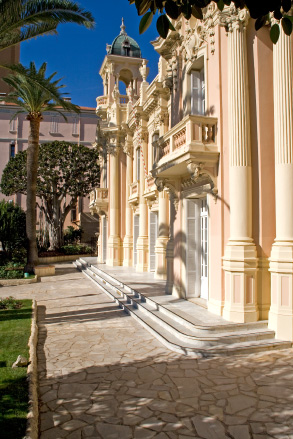
Stimulating art might not be high on your list of expectations from a city known for its cars, casinos and yachts, but when Wallpaper* made the trip to Monte Carlo recently, we discovered a city undergoing something of a cultural renaissance.
Pushing the pedal on this is the Nouveau Musée National de Monaco (NMNM). Led by Marie-Claude Beaud - the former director of the Fondation Cartier pour l'art Contemporain and the Mudam Luxemburg - the new museum has taken over two of the city's last remaining Belle Epoque villas, and has a fascinating exhibition programme underway for 2010.
Currently showing at the Villa Sauber is a show titled 'Looking up...' featuring the work of Nigerian artist Yinka Shonibare (fresh from unveiling his fourth plinth in London's Trafalgar Square) alongside pieces from the museum's own collection. In September, NMNM's refurbished Villa Paloma will host a show curated by German photographer Thomas Demand. Elsewhere, Damien Hirst's dots, sharks and butterflies have taken over the Musée océanographique de Monaco, and in July, Carsten Höller will be showing his work at the Ecole Supérieure d'Arts Plastiques de la Ville de Monaco.
'I want to educate the public about contemporary art and challenge them a little because we're so invaded by bling in Monaco,' says Beaud of her work for NMNM. Assistant curator Cristiano Raimondi takes it a little further. 'For Monte Carlo, we're perhaps a little bit dangerous, but I think that's why we're here,' he says. 'Marie-Claude has the energy to start something new.'
NMNM opened in 2009 but the current show is the museum's first with Beaud at the helm. Shonibare (the subject of a beautiful recent monograph by Prestel) is best known for his use of colourful batik fabric, which, although considered African, actually originates from Indonesia and was brought to Africa by Dutch colonisers in the 19th century. He creates Victorian frocks, ballet dresses and ships' sails from it, stretches it across canvases and sculpts alien figures out of it, using it as a visual metaphor for notions of colonialism, race and class.
Monte-Carlo has a long history of performance arts, and bringing in Shonibare - whose work has a strong theatrical bent - is an ingenious way of throwing fresh light on the museum's collections of theatre maquettes and costumes. And Shonibare's satirical musings on wealth and power, such as 'Diary of a Victorian Dandy', couldn't be more apt for the location. 'I am totally disgusted by wealth but, at the same time, I want it. So, my work is about that inner conflict,' says the artist.
Down in Villa Sauber's street-level former garage is a new acquisition for the museum - the '308 GTS, 1998/2004' - a Ferrari that artist, Bertrand Lavier, has coated in a thick slick of red acrylic paint. 'It's the best place I can possibly imagine this piece of work to be shown,' says the artist. Part of a series of paint covered objects by Lavier, it explores whether it is possible to have the copy on the original, and has sparked a lively debate with passers by. 'I heard one person say to another, 'Do you think its more or less expensive than the original?"' Beaud recalls. 'The other said, "I think it has no value at all". Then the first replied, "I think it's more expensive, because it's art". Adds Beaud: 'I wish I could have a microphone for these comments. This kind of debate is great.'
Receive our daily digest of inspiration, escapism and design stories from around the world direct to your inbox.
NMNM's second home, the Villa Paloma, is currently being transformed into a multi-floor gallery in readiness for the Thomas Demand show later this year. As well as showing his own works, Demand has selected pieces by the likes of Tacita Dean, Rodney Graham, Martin Boyce, Luigi Ghirri and Rene Magritte.
The Musée océanographique de Monaco's decision to stage a Damien Hirst exhibition is a perhaps a more obvious choice for Monte Carlo, guaranteed to pull in the crowds. But the context is brilliantly fitting. Some of Hirst's seminal works, including sharks in formaldehyde and pharmaceutical cabinets, are flanked by marine fauna and skeletons of what look like giant aquatic dinosaurs. The boundaries between art and science couldn't be more blurred. And some of the grotesque creatures of the sea are infinitely more shocking than anything Hirst could conjure.
Asked if Monte Carlo is now using art as a means to lure people away from the casinos, the NMNM director insists: 'We're not trying to create a hierarchy in terms of reasons to come here.' In fact Beaud is attempting to celebrate Monte Carlo's checkered history through her shows at the NMNM. 'We're hoping to create something around gambling in the future,' she adds. It'll be fascinating to see what the dice rolls next.
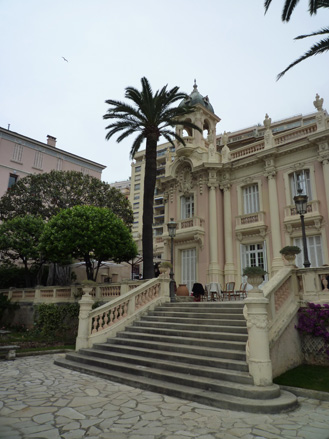
The Villa Sauber is currently showing 'Looking up...' - an exhibition of work by Yinka Shonibare alongside theatre maquettes and costumes from NMNM's collection.

'Diary of a Victorian Dandy: 03.00 hours' by Yinka Shonibare, MBE, 1998.
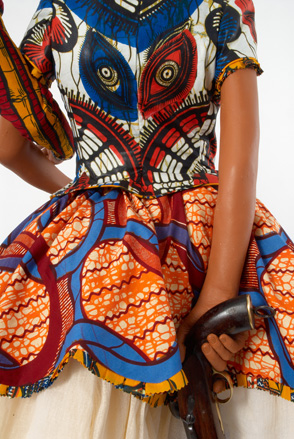
'Boy girl ballerina' by Yinka Shonibare, MBE, 2007. Image by Stephen White, courtesy of the artist, Stephen Friedman Gallery (London) and James Cohan Gallery (New York).

'Odile and Odette I' by Yinka Shonibare, MBE, 2005-2010.
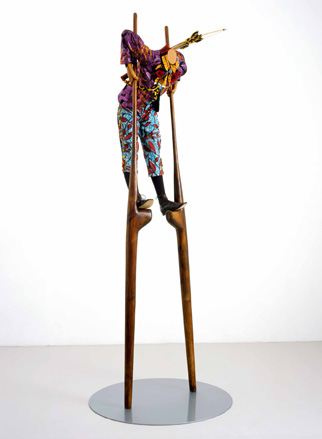
'Boy with bow and arrow on stilts' by Yinka Shonibare, MBE, 2006. Image by Stephen White, courtesy of the artist, Stephen Friedman Gallery (London) and James Cohan Gallery (New York).
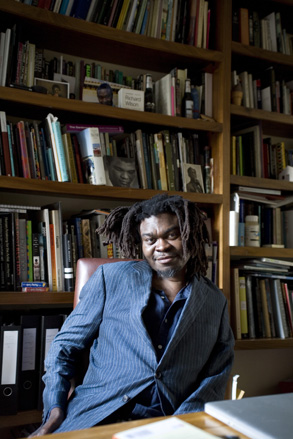
Nigerian born artist Yinka Shonibare, MBE.
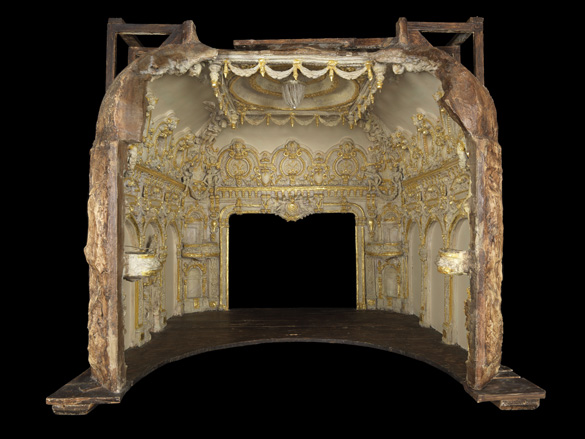
'Maquette d'etude pour l'Opera de Monte-Carlo' by Charles Garnier, 1878. Photograph by Mauro Magliani & Barbara Piovan
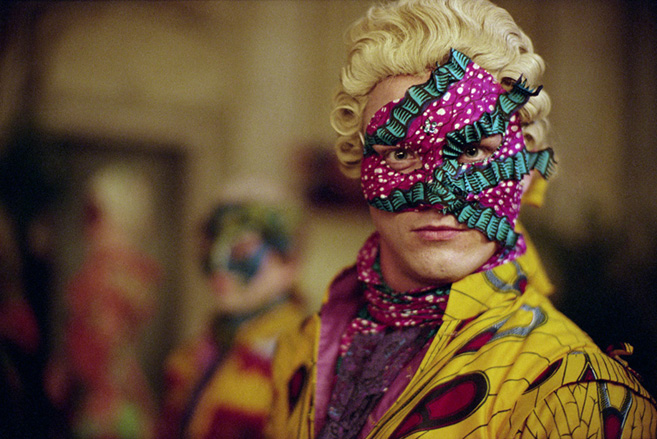
'Un Ballo in Maschera IV' by Yinka Shonibare, MBE, 2004-2005.
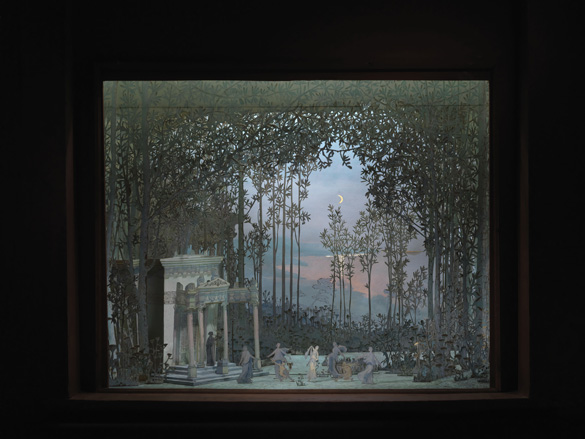
Mephistopheles, Act IV, 7e tableau >, >' by Alphonse Visconti, 1906. Image by Mauro Magliani & Barbara Piovan.
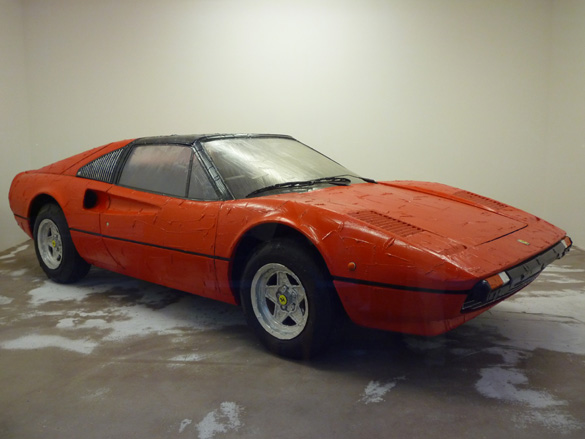
'308 GTS' by Bertrand Lavier, 1998-2004. This work is on show in the Villa Sauber's former garage, which has been transformed into a showroom.

The Villa Paloma - the second of NMNM's homes - is currently undergoing major refurbishment in time for the Thomas Demand exhibition in September.

The stairwell of the Villa Paloma, built in 1919

As well as showing his own works, Demand has selected pieces by the likes of Tacita Dean, Rodney Graham, Martin Boyce, Luigi Ghirri and Rene Magritte.
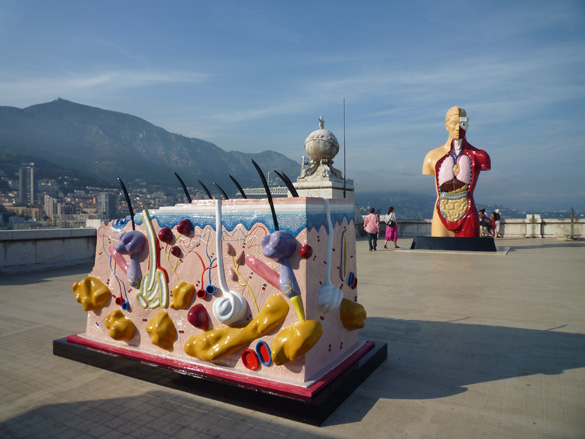
'Sensation', 2003, and 'Hymn', 1999-2005, by Damien Hirst, on the roof terrace of the Musée océanographique de Monaco, shown as part of the Cornucopia exhibition, which runs until 30th September
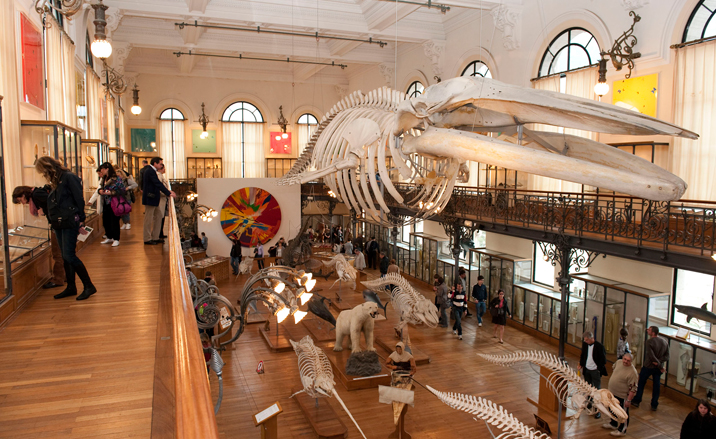
Inside the Musée océanographique de Monaco, Damien Hirst's 'Butterfly Paintings' hang above cabinets full of marine curiosities.
Malaika Byng is an editor, writer and consultant covering everything from architecture, design and ecology to art and craft. She was online editor for Wallpaper* magazine for three years and more recently editor of Crafts magazine, until she decided to go freelance in 2022. Based in London, she now writes for the Financial Times, Metropolis, Kinfolk and The Plant, among others.
-
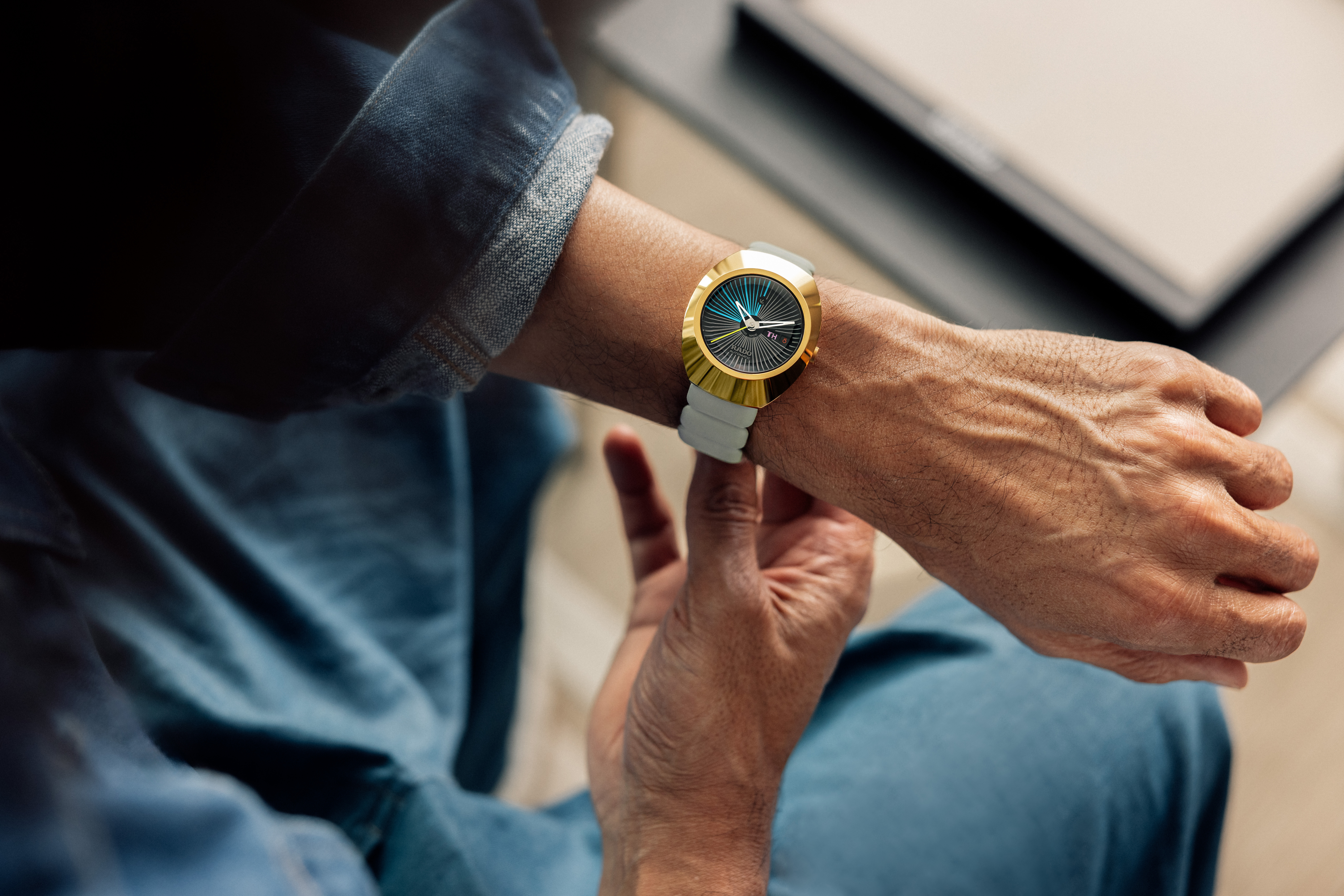 'I wanted to create an object that invited you to interact': Tej Chauhan on his Rado watch design
'I wanted to create an object that invited you to interact': Tej Chauhan on his Rado watch designDiastar Original which Rado first released in 1962 has become synonymous with elegant comfort and effortless display of taste. Tej Chauhan reconsiders its signature silhouette and texture on the intersection of innovation and heritage
-
 High in the Giant Mountains, this new chalet by edit! architects is perfect for snowy sojourns
High in the Giant Mountains, this new chalet by edit! architects is perfect for snowy sojournsIn the Czech Republic, Na Kukačkách is an elegant upgrade of the region's traditional chalet typology
-
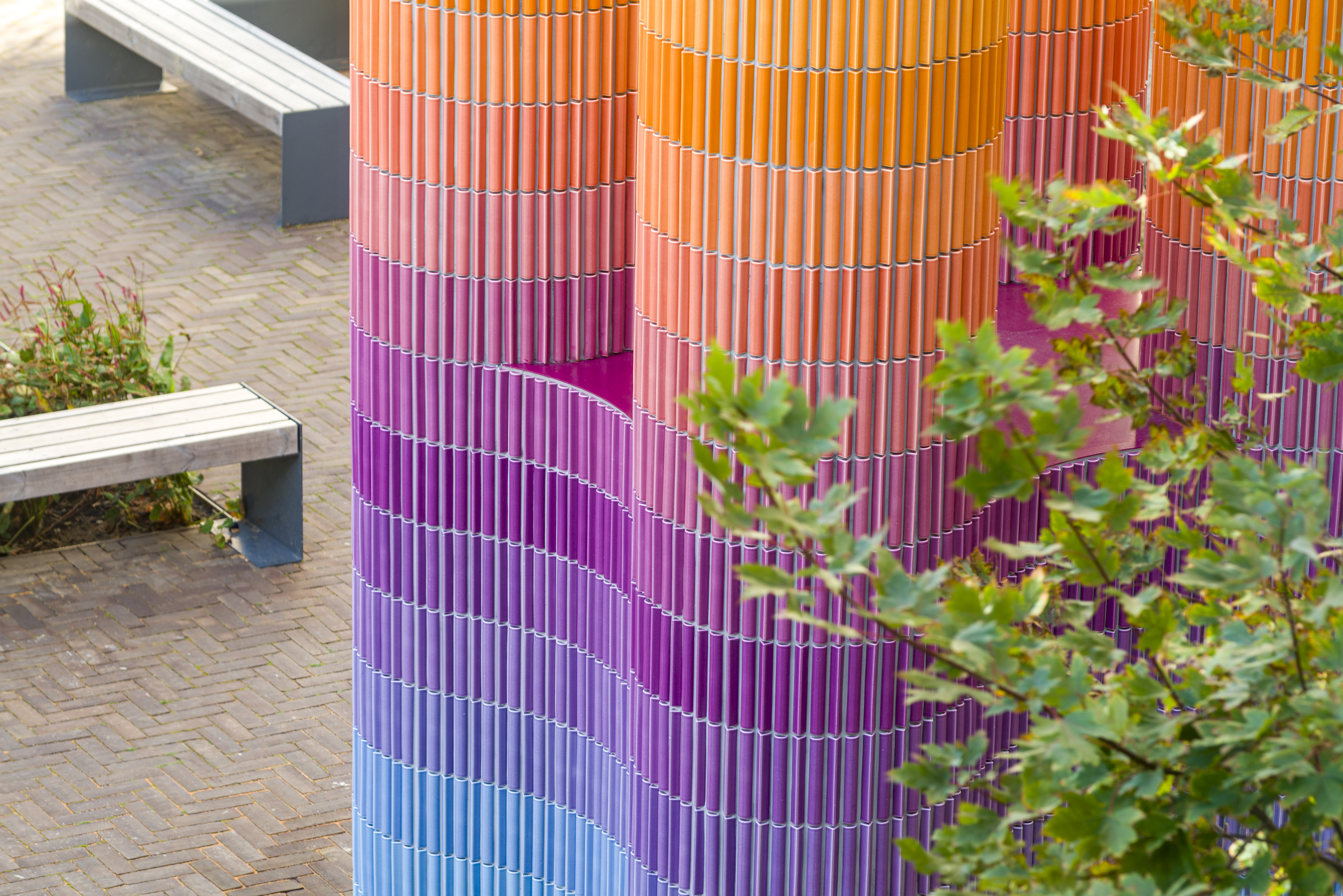 'It offers us an escape, a route out of our own heads' – Adam Nathaniel Furman on public art
'It offers us an escape, a route out of our own heads' – Adam Nathaniel Furman on public artWe talk to Adam Nathaniel Furman on art in the public realm – and the important role of vibrancy, colour and the power of permanence in our urban environment